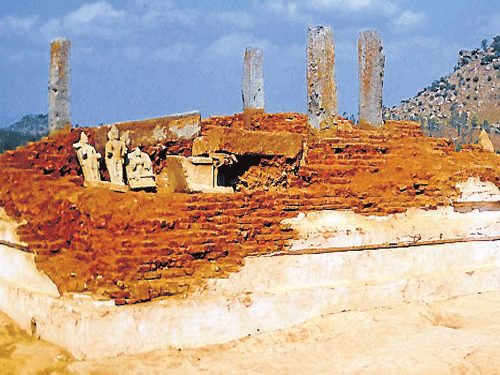
A Jain Basadi, built during Ganga dynasty in the sixth century, has been excavated near Arethippuru village, Maddur taluk, Mandya district.
In the month of September and October, a team of more than 30 archeologists lead by T M Keshava, Deputy Superintending Archaeologist of Archeological Survey of India (ASI) and Assistant Archaeologist Aravali, had taken up the excavation works.
A Jain temple, measuring about hundred feet in length and 40 feet in width was discovered, along with seven statues atop Chandragiri Hill. The jain temple consists of a facade, an entrance and sanctum sanctorum.
Ten stone pillars, statues of Bahubali, Yaksha and Yakshini, have been excavated. Apart from them, several other relics that were used to peform rituals at the temple were also discovered during the excavation.
Experts opine that the Basadi was dedicated to one of the Thirtankaras of Jainism and was once a popular place for pilgrims, along with the temples at Shravanabelagola.
Following the retirement of Keshava, T Arun Raj has been appointed as the superintendent of the excavation project. However, the works have been temporarily discontinued. Aravali said that there were chances that four more Jain temples are present around the excavation site.
“We will get more information once excavation is continued,” he said.